This post is also available in: fr
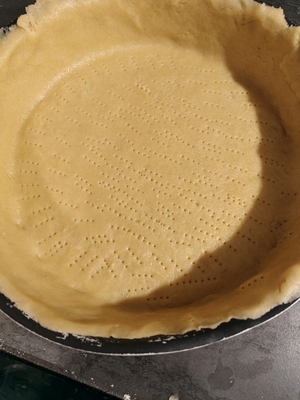
When done, it looks like this.
Principle
Shortcrust pastry, or simply pastry is one of the three main pastries we do in France, along with puff pastry and shortbread dough. It can be both used to prepare main dishes or desserts as the dough itself has no addes sugars.
Ingredients
- 125 grams of softened (at room temp’) 2% salted-butter
- 250 grams of T65 flour
- 2 egg yolks
- 6 cl of water (adapt the volume depending on what goes)
Preparation
(If you own a mixer/robot, you can just put the whole ingredients in the bowl, put the proper whipping head on the robot and start mixing at low/medium speed)
Cut the butter into small dices and mix it with the flour. The french term is « sabler » which would literally translate to « to sand » but IDK if it’s used in English. You really need to press the flour into the butter (or the opposite) in order to get an homogene yellow flour-like powder.
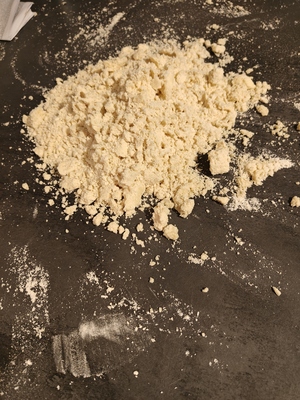
Is that floured butter or buttered flour? Or shortbread flour or…
Add the two yolks and some of the water.
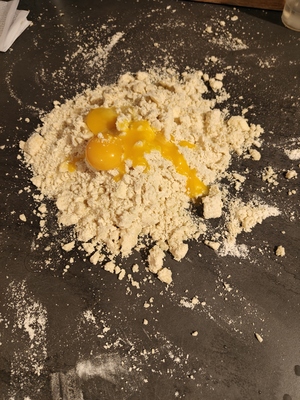
Do you feel like it’ll stick?
At this point, there’s no choice, you have to put your fingers in it, despite the fact it’ll stick. The whole point is to incorporate the fluids in the buttered flour and to form a dough ball. It needs to be soft and slightly crumbly (really slightly). Should the dough not be soft enough, add water.
You’ll need around 3 to 5 minutes of baking to achieve this ball.
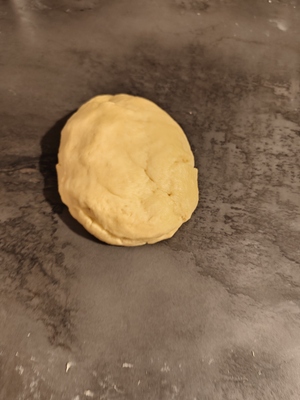
This is ballsy
Resting
While not mandatory, the dough can be put to rest into the fridge for half an hour.
Molding and shaping
Depending on why you make a pastry, you’ll either just butter the pan and add some flour to avoid the dough to stick to the pan while cooking. If you’re making a dessert you can add sugar after the butter so that it caramelizes while cooking which gives the dough a nice flavour.
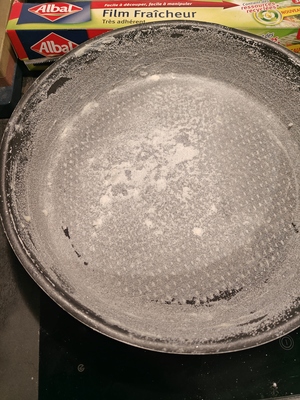
omnomnom
Add a pinch of flour on the work bench. With a rolling pin, gently roll out the dough in order to make a circle the size of the pan. The best way to do it efficiently, rotate the dough a quarter turn each time you’re done using the rolling pin from front to back (we’re not good to use it from left to right).
A nice rolled out dough is still a bit thick but not too much.
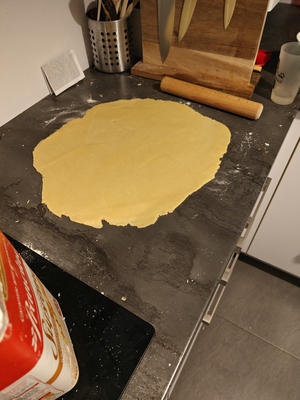
A circle. Almost.
Mold the pastry in the pan, cut the excess on the pan borders (either with your finger or with your rolling pin). You can ball the excess in order to use it to mold the dough to the pan corners at the bottom of it. This allows one to avoid using their fingers which tend to leave fingerprints.
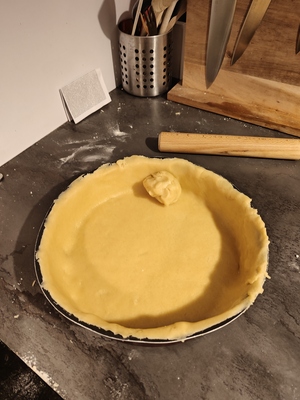
Revolutionary pastry protip.
With a fork, prick the dough in order to avoid it to expand while cooking. It’s useful to do it even if you intend to put the content of your dish before cooking the dough.

No dough has been hurt during the writing of this article.
Cooking
You can chose to cook the pastry before putting the content of your dish in it. If so it’s done in about 10 to 15 minutes at 200 °C (392 °F). If you cook it before garnishing it, you might be interested in putting dry beans or lentils in the dough to guarantee that it won’t expand.
What about the excess
Roll it out, add icing sugar or sugar on it, then roll it, slice small “snails” and put them in the oven for 5 to 10 minutes. Who said “low carb”? Other option: find a friend who enjoys raw dough and feed them with it to become even more friendly.
Enjoy!